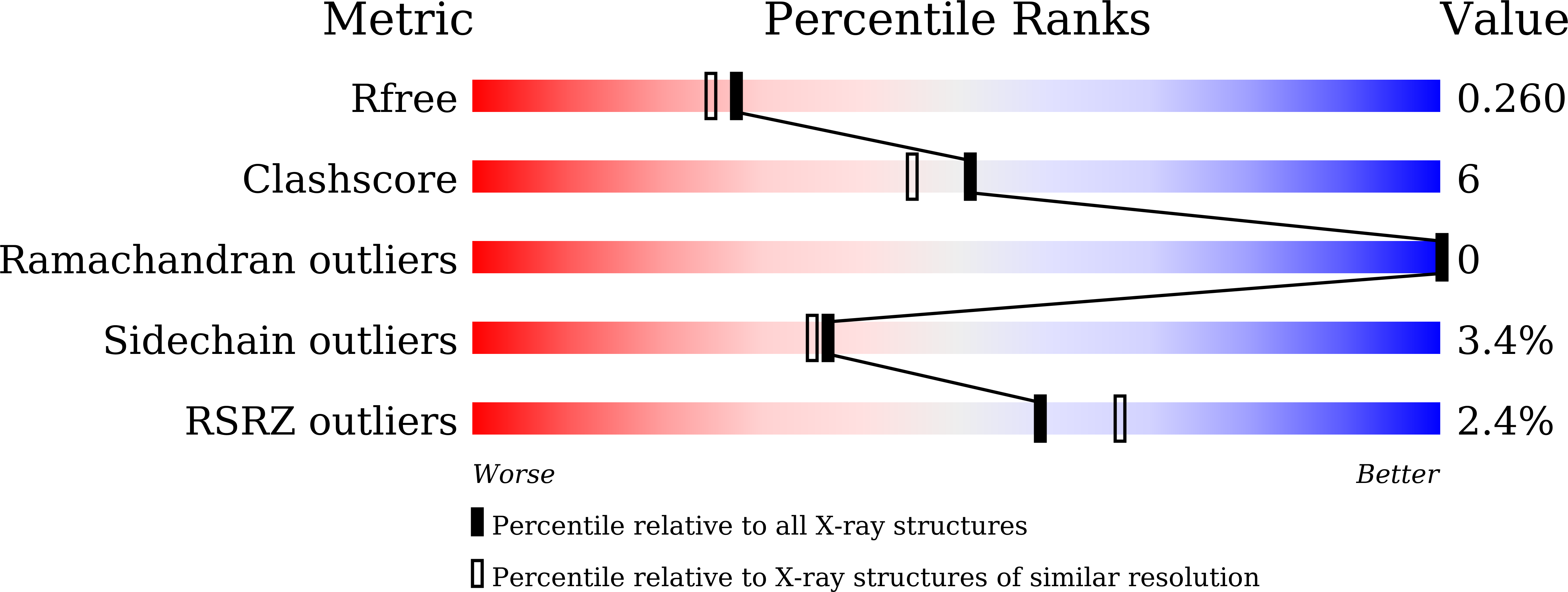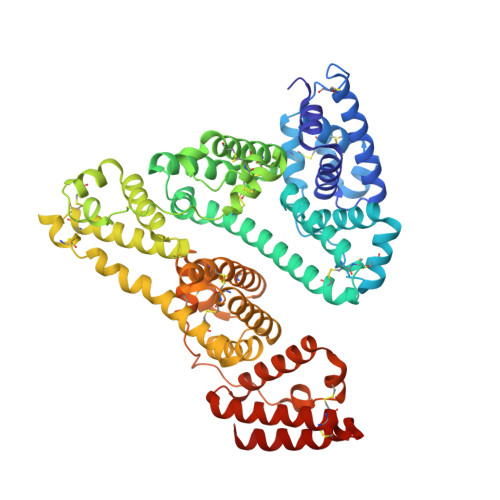Insight into the anti-proliferation activity and photoinduced NO release of four nitrosylruthenium isomeric complexes and their HSA complex adducts.
Shi, J., Xie, L., Gong, W., Bai, H., Wang, W., Wang, A., Cao, W., Tong, H., Wang, H.(2024) Metallomics 16
- PubMed: 38263542
- DOI: https://doi.org/10.1093/mtomcs/mfae005
- Primary Citation of Related Structures:
8K1Y - PubMed Abstract:
Four Ru(II)-centered isomeric complexes [RuCl(5cqn)(Val)(NO)] (1-4) were synthesized with 5cqn (5-chloro-8-hydroxyquinoline) and chiral Val (Val?=?L- or D-valine) as co-ligand, and their structures were confirmed using the X-ray diffraction method. The cytotoxicity and photodynamic activity of the isomeric complexes and their human serum albumin (HSA) complex adducts were evaluated. Both the isomeric complexes and their HSA complex adducts significantly affected HeLa cell proliferation, with an IC50 value in the range of 0.3-0.5?¦̀M. The photo-controlled release of nitric oxide (NO) in solution was confirmed using time-resolved Fourier transform infrared and electron paramagnetic resonance spectroscopy techniques. Furthermore, photoinduced NO release in living cells was observed using a selective fluorescent probe for NO. Moreover, the binding constants (Kb) of the complexes with HSA were calculated to be 0.17-1.98?¡Á?104 M-1 and the average number of binding sites (n) was found to be close to 1, it can serve as a crucial carrier for delivering metal complexes. The crystal structure of the HSA complex adduct revealed that one [RuCl(H2O)(NO)(Val)]+ molecule binds to a pocket in domain I. This study provides insight into possible mechanism of metabolism and potential applications for nitrosylruthenium complexes.
Organizational Affiliation:
Key Laboratory of Chemical Biology and Molecular Engineering of the Education Ministry and Key Laboratory of Energy Conversion and Storage Materials of Shanxi Provence, Institute of Molecular Science, Shanxi University, Taiyuan 030006, China.























